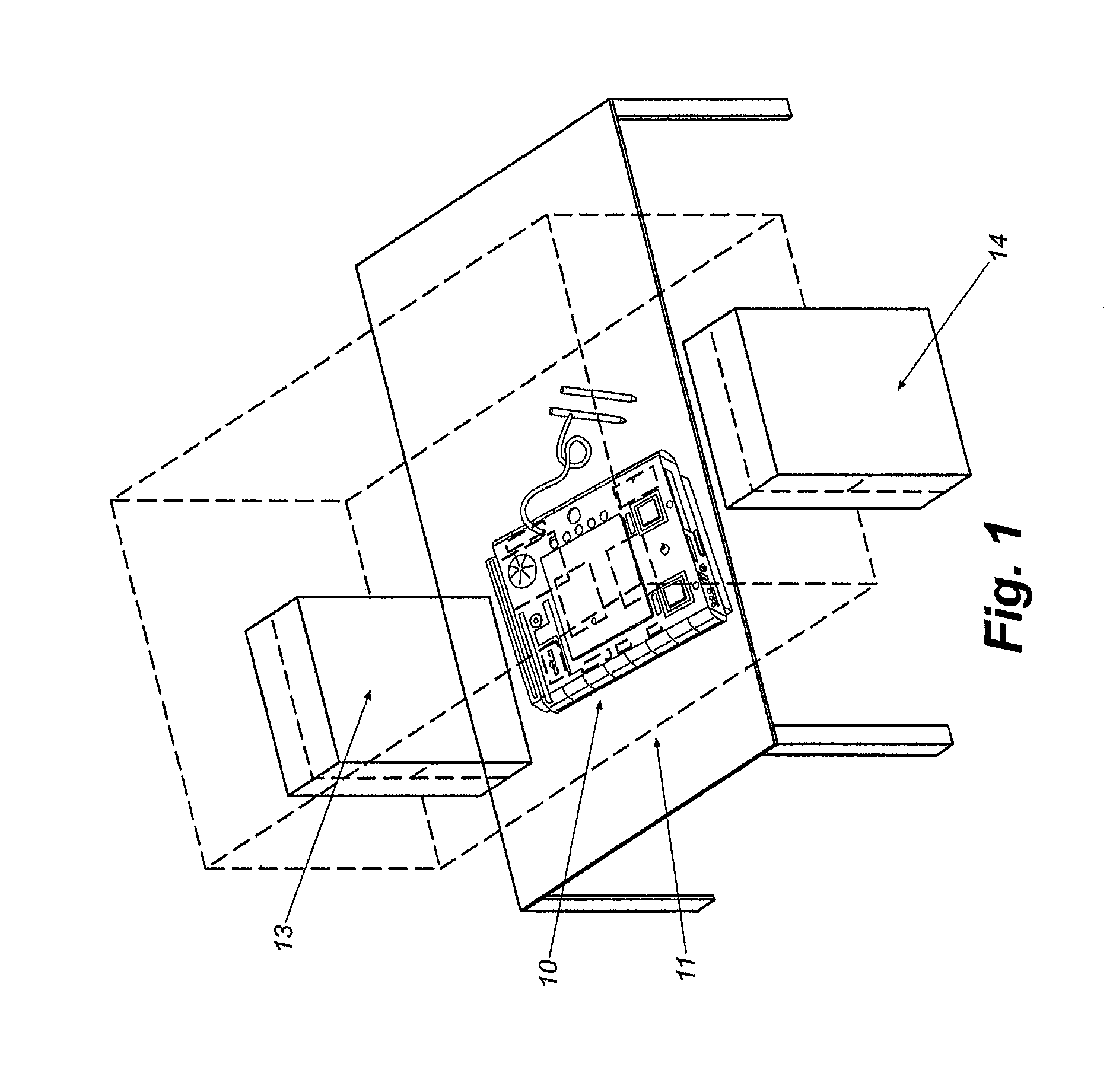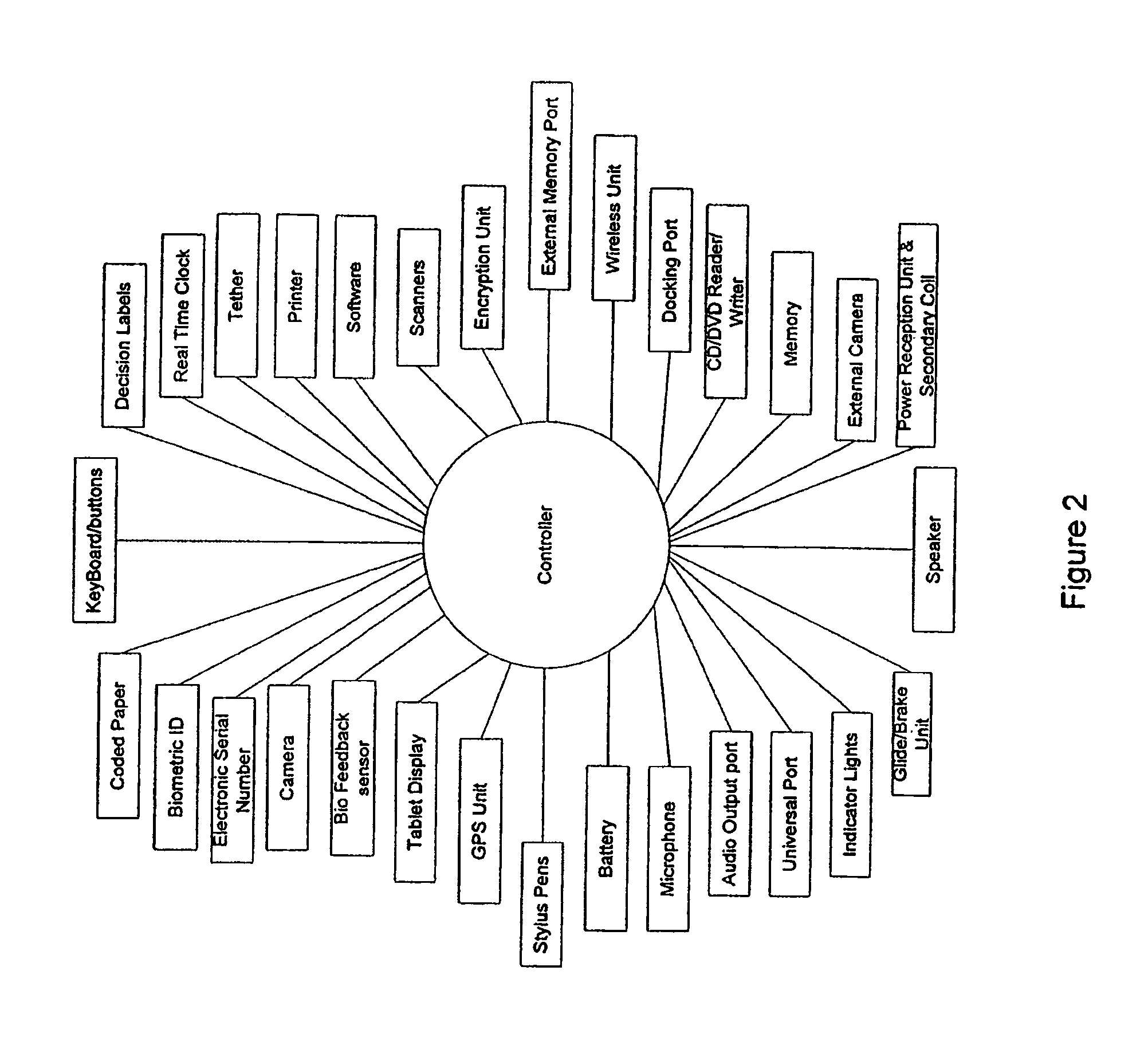Transaction automation and archival system using electronic contract disclosure units
a technology of electronic contract and disclosure unit, applied in the field of commercial transactions, can solve the problems of inability to keep a record of explanations, inability to provide formal explanations, and inability to provide verbal explanations, so as to eliminate mistakes and costs of re-keying applications, reduce the risk of inadvertent disclosure, and save time
- Summary
- Abstract
- Description
- Claims
- Application Information
AI Technical Summary
Benefits of technology
Problems solved by technology
Method used
Image
Examples
second embodiment
[0200]FIG. 7 shows the separate display and signature block ECDU embodiment. The ECDU shown in FIG. 7 shares nearly all of the components discussed above in FIG. 4 with the exception of the tablet display. In this second embodiment, the display is a non-tablet display 96. A digitizer / signature pad 91 is incorporated between fingerprint readers 27 and 28 to record pen input; e.g., record user signatures. The non-tablet display 96 still contains the graphical capabilities; e.g., color, blinking, etc., used to emphasize important information. Other pen input devices are used in substitution for the embodiments described above (e.g. RF pens that capture handwriting using special grid paper). Other alternate embodiments include use of touch screens such as those found on PDAs, to include signature functionality in the screen or as a small auxiliary screen.
[0201]FIG. 8 shows a tablet PC based ECDU embodiment. This embodiment is based on building an ECDU from a commercially available table...
third embodiment
[0225]In a third embodiment, contract and disclosures are printed on pre-printed contract or disclosure forms. These forms already contain the special location coded patterns and a generic contract or disclosure such as contract text and field labels, and the printer is simply adding the session specific data such as name, address, phone number, price, terms, etc. When the forms are pre-printed, a forms log is created as shown on the left in FIG. 24. The forms log contains the mapping between document ID (e.g. location coded dot pattern ID) and the form type. Prior to the printer adding deal specific information, the internal document ID reader scans the pre-coded forms to determine the document ID. Using the forms log, the form type can be verified prior to printing to avoid erroneous printing. If the form type is wrong or the document ID code is “in-use” then the form is ejected and saved for future use. After each form is printed, the form log is updated to reflect that the form ...
PUM
 Login to View More
Login to View More Abstract
Description
Claims
Application Information
 Login to View More
Login to View More - R&D
- Intellectual Property
- Life Sciences
- Materials
- Tech Scout
- Unparalleled Data Quality
- Higher Quality Content
- 60% Fewer Hallucinations
Browse by: Latest US Patents, China's latest patents, Technical Efficacy Thesaurus, Application Domain, Technology Topic, Popular Technical Reports.
© 2025 PatSnap. All rights reserved.Legal|Privacy policy|Modern Slavery Act Transparency Statement|Sitemap|About US| Contact US: help@patsnap.com



